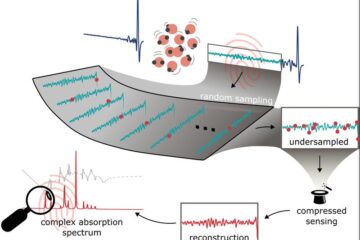Vanderbilt astronomers participate in new search for dark energy

The goal of the six-year project is to measure the spectra of 1.4 million galaxies and 160,000 quasars, extremely distant objects that shine more brightly than entire galaxies.
The previous sky survey (SDSS-II) determined the two-dimensional position of these objects in the sky. The new project will measure their distance, allowing astronomers to produce a three-dimensional map with unprecedented detail that extends out about one-fifth of the full depth of the visible universe and traces the evolution of the universe back some 6.5 billion years.
“This will give us a three-dimensional map of a large volume of the universe, which is exactly what we need to learn more about dark energy,” said assistant professor Andreas Berlind. He and his colleagues in Vanderbilt's physics and astronomy department – assistant professor Kelly Holley-Bockelmann, associate professor Keivan Stassun and professor David Weintraub – are participating in the survey along with 350 scientists from 41 other institutions.
Dark energy is a type of “negative gravity” that seems to play a role in accelerating the expansion of the universe. Scientists think it makes up about 70 percent of the energy/matter of the universe but its basic nature is a mystery. “One of the most sensitive measures of dark energy that we have found is the large-scale distribution of galaxies,” Berlind said.
BOSS uses the same telescope as the original Sloan Digital Sky Survey, but it has been equipped with new, specially built spectrographs. The new instruments can measure the spectra of 1,000 objects at a time and are considerably more sensitive than the original instruments so they can record the spectra of extremely dim objects. “The new spectrographs are much more efficient in infrared light,” explained Natalie Roe of Berkeley Lab, the instrument scientist for BOSS. “The light emitted by distant galaxies arrives at Earth as infrared light, so these improved spectrographs are able to look much farther back in time.”
The Vanderbilt team brings a unique resource to the project: A set of more than 400 simulated universes. These are computer models of the universe that start at the Big Bang and then virtually evolve to the present following known physical laws. “Other groups have produced individual simulations that are more detailed than ours, but we've gone for greater numbers in order to get a better idea of the amount of variation that is possible,” said Berlind.
These virtual universes are being used to test the BOSS data analysis methods and will be necessary to interpret BOSS's measurements of dark energy. Berlind and his colleagues are generating simulated observational data from a number of their virtual universes; this data is run through the BOSS analysis pipeline and the results are compared with the original. “This allows us to catch any systematic errors that might throw the results off,” he said.
ABOUT SDSS-III AND BOSS
BOSS is the largest of four surveys in SDSS-III, which includes 350 scientists from 42 institutions. The BOSS design and implementation has been led from the U.S. Department of Energy's Lawrence Berkeley National Laboratory. The optical systems were designed and built at Johns Hopkins University, with new CCD cameras designed and built at Princeton University and the University of California at Santa Cruz/Lick Observatory. The University of Washington contributed new optical fiber systems, and Ohio State University designed and built an upgraded BOSS data-acquisition system. The “fully depleted” 16-megapixel CCDs for the red cameras evolved from Berkeley Lab research and were fabricated in Berkeley Lab's MicroSystems Laboratory (MSL).
Funding for SDSS-III has been provided by the Alfred P. Sloan Foundation, the Participating Institutions, the National Science Foundation and the U.S. Department of Energy. The SDSS-III web site is http://www.sdss3.org/.
SDSS-III is managed by the Astrophysical Research Consortium for the Participating Institutions of the SDSS-III Collaboration, including the University of Arizona, the Brazilian Participation Group, University of Cambridge, University of Florida, the French Participation Group, the German Participation Group, the Michigan State/Notre Dame/JINA Participation Group, Johns Hopkins University, the U.S. Department of Energy's Lawrence Berkeley National Laboratory, Max Planck Institute for Astrophysics, New Mexico State University, New York University, the Ohio State University, the Pennsylvania State University, University of Portsmouth, Princeton University, University of Tokyo, the University of Utah, Vanderbilt University, University of Virginia and the University of Washington.
For more news about Vanderbilt, visit the Vanderbilt News Service homepage on the Internet at www.vanderbilt.edu/News.
[Note: A multimedia version of this story is available on Exploration, Vanderbilt's online research magazine, at http://www.vanderbilt.edu/exploration/stories/skysurvey.html.]
Media Contact
More Information:
http://www.vanderbilt.eduAll latest news from the category: Physics and Astronomy
This area deals with the fundamental laws and building blocks of nature and how they interact, the properties and the behavior of matter, and research into space and time and their structures.
innovations-report provides in-depth reports and articles on subjects such as astrophysics, laser technologies, nuclear, quantum, particle and solid-state physics, nanotechnologies, planetary research and findings (Mars, Venus) and developments related to the Hubble Telescope.
Newest articles

How evolution has optimised the magnetic sensor in birds
The magnetic sense of migratory birds is probably based on the protein cryptochrome 4, and a genetic study has now provided further support for this theory. A team of researchers…

Molecular Fingerprint Beyond the Nyquist Frequency
Ultrafast laser spectroscopy allows the ascertainment of dynamics over extremely short time scales, making it a very useful tool in many scientific and industrial applications. A major disadvantage is the…

High-energy-density aqueous battery based on halogen multi-electron transfer
Traditional non-aqueous lithium-ion batteries have a high energy density, but their safety is compromised due to the flammable organic electrolytes they utilize. Aqueous batteries use water as the solvent for…





















